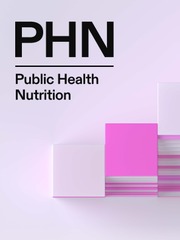No CrossRef data available.
Article contents
Exploring the feasibility of using school food purchase data as a method to assess dietary intakes in secondary school-aged pupils
Published online by Cambridge University Press: 14 April 2025
Abstract
To explore the information available in school food purchase data and to ascertain the potential to assess pupils’ dietary intakes. The proportion of purchased food and drink items that were linked to (i) an Intake24 food group, and (ii) a nutrient code from the UK NDNS Databank, was calculated.
Pupil-level food purchase data covering the whole school day was obtained. Each item purchased was linked to an Intake24 food group and an NDNS Nutrient Databank code. Depending on the level of detail provided, items may have been assigned both a food group and a nutrient code, a food group only or neither for items which did not contain enough information about the type of food or drink purchased.
Five secondary schools in northeast England
Secondary school pupils aged 11-16 years
The data captured 119,125 purchases made by 3466 pupils. 92% of item descriptions were assigned a food group, this equated to 82% of total purchases. 70% were assigned an NDNS Databank nutrient code, which accounted for 60% of total purchases. 8% of items had insufficient information and did not have a food group or a nutrient code assigned.
The methodological challenges of collecting dietary data from pupils in the secondary school setting are significant. Purchase data offers an alternative, objective approach to collecting information on school food choices, across the school day and for a large sample of pupils. With further development the potential to use purchase data to assess intakes could be achieved.
- Type
- Research Paper
- Information
- Creative Commons
- This is an Open Access article, distributed under the terms of the Creative Commons Attribution licence (http://creativecommons.org/licenses/by/4.0/), which permits unrestricted re-use, distribution and reproduction, provided the original article is properly cited.
- Copyright
- © The Author(s), 2025. Published by Cambridge University Press on behalf of The Nutrition Society


